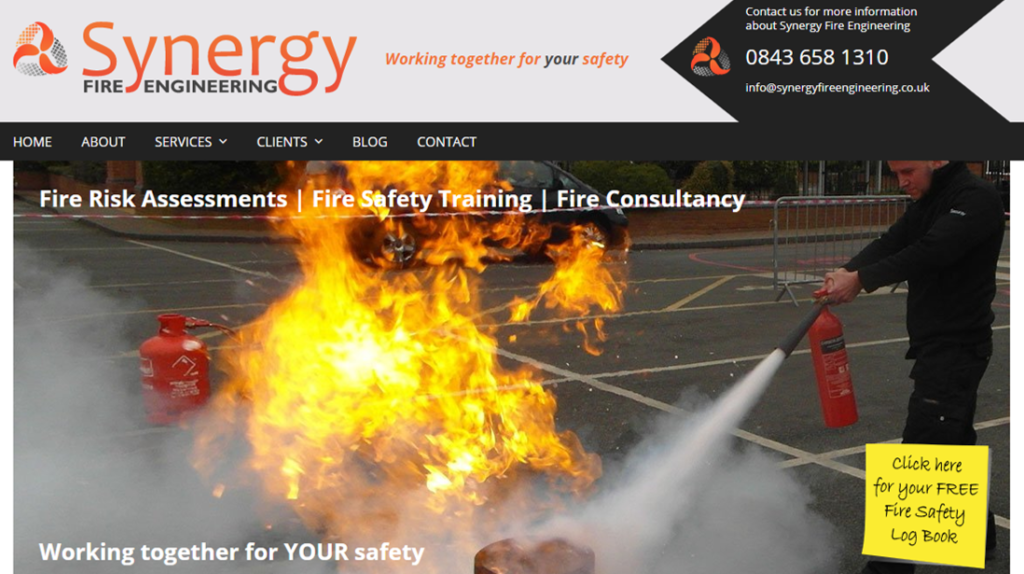It’s always best to seek the opinion of experts when you need them. Given all the talk we’ve been doing about risk assessments and understanding legislation over the last month or so we thought it would be a good idea to help you get to know some of the people we trust to work with us and our clients.
This month it’s Matt Spivey from Synergy Fire Engineering who is in the spotlight.
First of all, how do you know SS Systems?
SS Systems and I have been working together now for 5 years. We work with them when they need independent fire risk assessments doing, especially for particularly challenging buildings or where the occupants have specific needs.
What is Synergy Fire Engineering?
We’re a fire safety consultancy – we do fire risk assessments, fire safety training and fire strategy.
What do you mean by “fire strategy”?
A fire strategy is a document we prepare that sets out how the organisation intends to install, maintain and manage fire safety on site. It’s something that is usually carried out when the building is new or when a change of use has been applied for, but can be a useful service for existing building owners if there is no “competent person” on site to prepare such a document.
Why is it useful?
It can be particularly useful for buildings with eccentricities, or where the occupants have specific needs. For example, we recently documented the fire strategy for a school which had children with special needs. The sounders had to be set up in a certain way to ensure the children weren’t unnecessarily upset.
Have you seen much change since the Grenfell tragedy?
Yes, there has been a substantial increase in demand, especially from residential associations of high rise buildings – the ones where they are wholly owned by residents and may have never carried out a risk assessment. The Grenfell situation has made people realise that they do need to get risk assessments done and have regular fire safety inspections. Potentially it’s going to cost lots of money to rectify quite a number of sites.
What can people do to be more aware of fire safety?
All risk assessments should be carried out by a “competent person”. One of the ways in which to do this is to use an organisation that is BAFE SP205 registered.
BAFE SP205 sets out 12 different competency areas for 12 types of premises. An accredited organisation has to ensure that each person responsible for performing risk assessments has been accredited in each of the 12 disciplines. They have bi-annual audits, and as a company we also carry out our own checks throughout the year.
Fire risk assessments
The managing director of an organisation is responsible for ensuring the risk assessment is suitable and sufficient. A risk assessment will set out any significant findings that needs rectifying. The responsible person should familiarise themselves with it, ensure the work is done and then document those actions.
Emergency
We also offer an “emergency service” for organisations who have had an enforcement notice. For example, we had a case recently where a risk assessment had been done two years before we saw them, the actions of which had still not been done. The fire service were coming within the next month so they asked us to review the risk assessment and come up with a plan as to how they could implement the recommendations and avoid further prosecution.
We work alongside them to help them understand the requirements, and hold their hands until it’s all sorted.
How long have you been in the industry?
A long time! I’ve been in the fire industry since I left school in 1990, started doing risk assessment over 12 years ago. I loved the industry so much I have a degree in fire engineering.
If you could give one piece of advice about fire safety, what would it be?
Have a risk assessment done by a competent professional. You can do your own but you must understand that doing so puts you in a position of liability.
I often liken it to servicing your own car – you may have some knowledge of how the car works but if you wanted to check that it was working properly, you wouldn’t do a diagnostic test yourself (unless you’re a mechanic of course!).
Always ensure that it is a “competent person” (ie one who is aware of the legal requirements) who does your risk assessment.
Contact details
If you are looking to change or upgrade your fire alarm system, then give our sales team a call on 01709 362999 or email sales@sssystems.co.uk.

